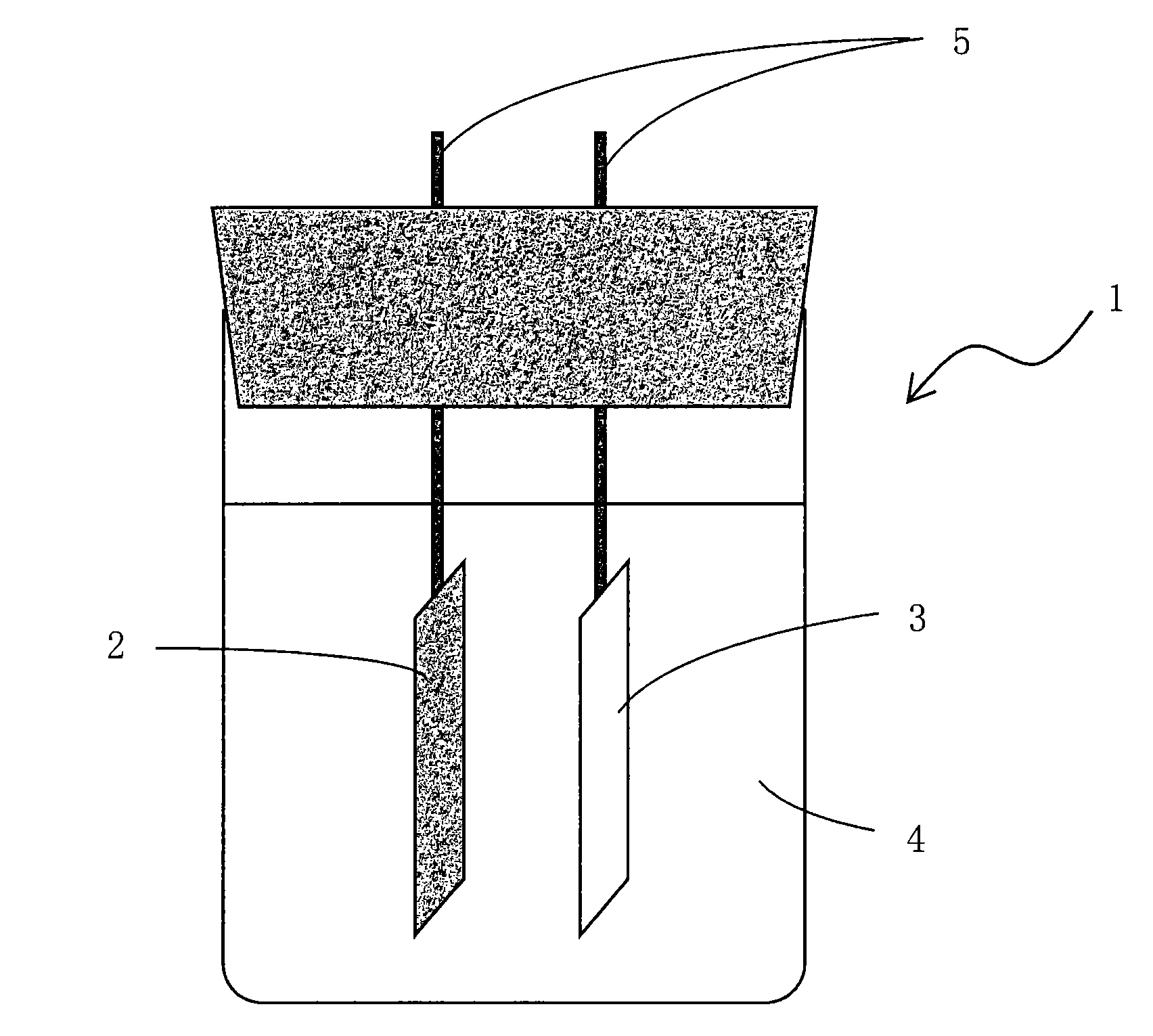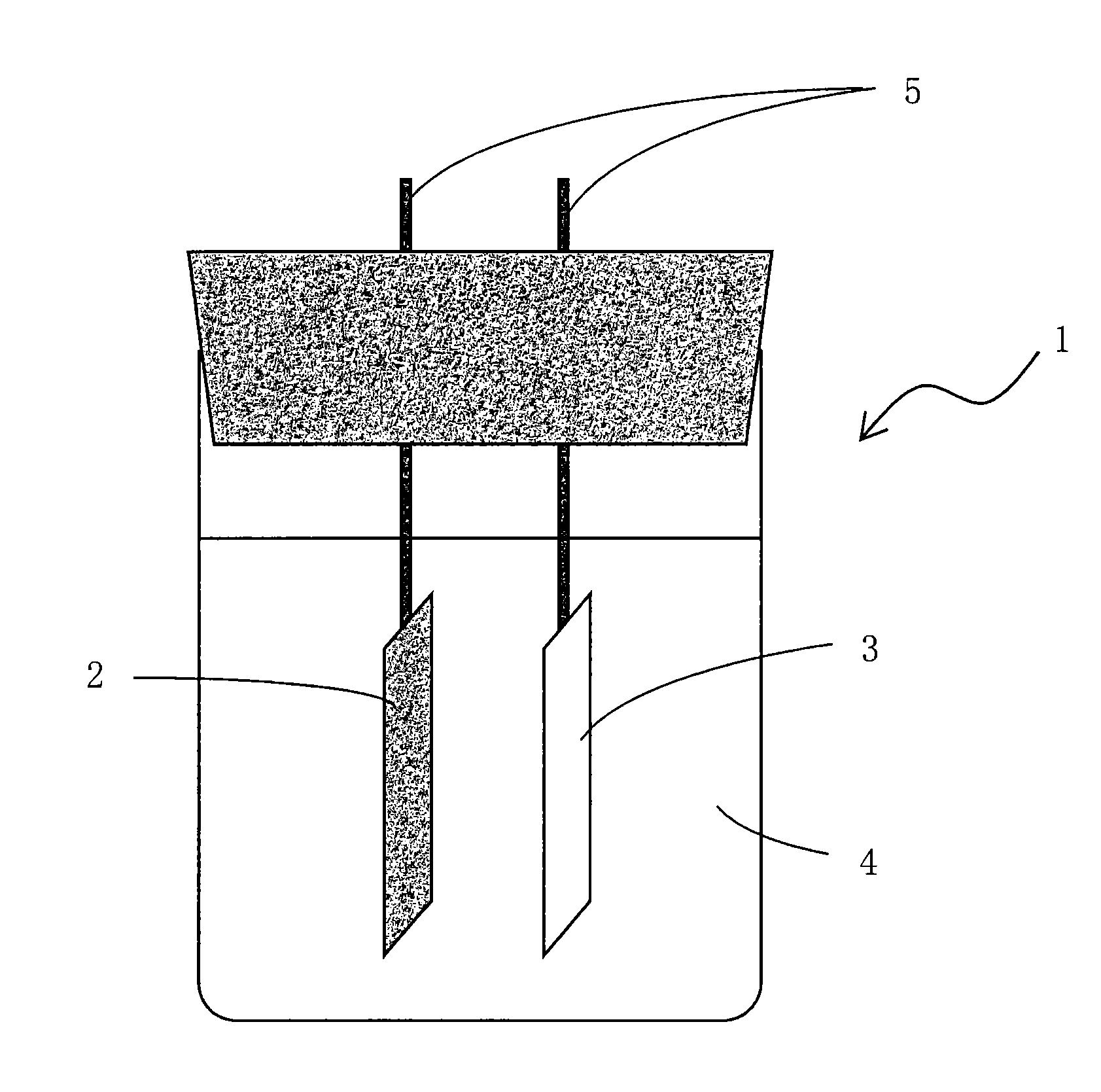Battery electrode and lithium ion secondary battery provided with same
a lithium ion secondary battery and battery electrode technology, which is applied in the direction of cell components, final product manufacturing, sustainable manufacturing/processing, etc., can solve the problems of battery cycle characteristics and safety deterioration, reduced initial charge/discharge efficiency, and decomposition or deterioration, etc., to achieve excellent charge/discharge properties and cycle characteristics, less polarization, and easy formation
- Summary
- Abstract
- Description
- Claims
- Application Information
AI Technical Summary
Benefits of technology
Problems solved by technology
Method used
Image
Examples
production example 1
Production of Polyvinyl Alcohol-(b)-Polyacrylic Acid Copolymer (Polymer A)
[0074]In a 3-liter four-neck separable flask equipped with a reflux condenser and an impeller were charged 737 g of ion-exchange water and 100 g of a polyvinyl alcohol having a terminal mercapto group (polymerization degree: 1500, saponification degree: 98.5 mol %), and the mixture was heated to 90° C. to dissolve the polyvinyl alcohol and then cooled to room temperature. To the aqueous solution was added with stirring 19.8 g of acrylic acid and the solution was heated to 70° C. Then, the atmosphere of the system was substituted with nitrogen by bubbling nitrogen into the aqueous solution for 30 min. After nitrogen substitution, to the aqueous solution was added 37.6 mL of a 2.5% by mass aqueous solution of potassium persulfate sequentially over 90 min to initiate and promote block copolymerization and the system was kept at 75° C. for 60 min to allow the reaction to further proceed. Then, the mixture was cool...
production example 2
Production of Polyvinyl Alcohol-(b)-Polyacrylic Acid Salt Copolymer (Polymer B)
[0075]To ion-exchange water was added lithium hydroxide (LiOH) to 1 mol / L, to prepare an aqueous solution of lithium hydroxide. Then, to an aqueous solution of polymer A with a solid content of 13% by mass prepared as described in Production Example 1 was added with stirring the above aqueous solution of lithium hydroxide in an amount of 0.4 equivalent to the amount which would neutralize all carboxyl groups in acrylic acid units in polymer A, to prepare an aqueous solution of polyvinyl alcohol-(b)-polyacrylic acid salt copolymer (polymer B). Using a pH test paper, acidity of the aqueous solution was determined to be pH 6. To the solution was added additional ion-exchange water to adjust a solid content to 8% by mass.
production example 3
Production of Polyvinyl Alcohol-(b)-Polyacrylic Acid Copolymer (Polymer C)
[0076]An aqueous solution of polyvinyl alcohol-(b)-polyacrylic acid copolymer (polymer C) was prepared as described in Production Example 1, substituting a polyvinyl alcohol having a terminal mercapto group (polymerization degree: 500, saponification degree: 98.5 mol %) for a polyvinyl alcohol having a terminal mercapto group (polymerization degree: 1500, saponification degree: 98.5 mol %). To the solution was added additional ion-exchange water to adjust a solid content to 8% by mass.
PUM
| Property | Measurement | Unit |
|---|---|---|
| temperature | aaaaa | aaaaa |
| temperature | aaaaa | aaaaa |
| pH | aaaaa | aaaaa |
Abstract
Description
Claims
Application Information
 Login to View More
Login to View More - R&D
- Intellectual Property
- Life Sciences
- Materials
- Tech Scout
- Unparalleled Data Quality
- Higher Quality Content
- 60% Fewer Hallucinations
Browse by: Latest US Patents, China's latest patents, Technical Efficacy Thesaurus, Application Domain, Technology Topic, Popular Technical Reports.
© 2025 PatSnap. All rights reserved.Legal|Privacy policy|Modern Slavery Act Transparency Statement|Sitemap|About US| Contact US: help@patsnap.com


